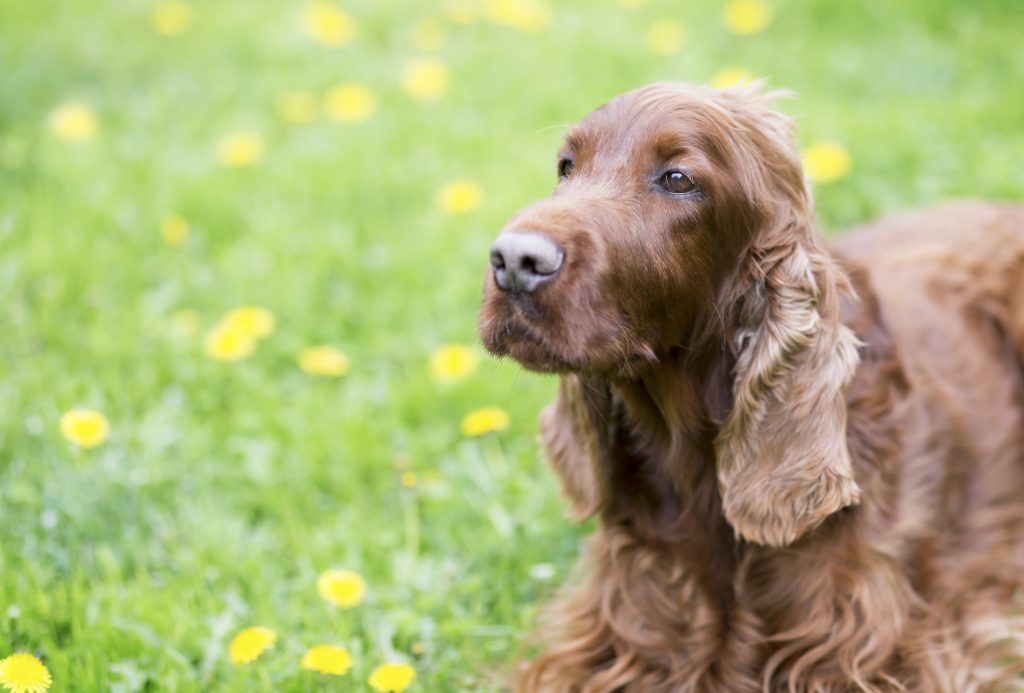All of us want our pet friends to be happy and behave well. And while it may seem easy to train your dog, there are some things you should not do if you want your dog to learn without acting up. Positive reward that is consistent is important for training, but too many people make mistakes that make it harder for their dog to learn. These mistakes include giving too little or too much negative feedback, not giving enough positive feedback, and giving too much negative feedback. We’ll talk about some of the actions, treats, and punishments that can make training your dog harder in this piece. So, let’s take a better look at what you should not do to make sure your pet friend has the best time learning.
Don’t Use Punishment as a Form of Training
You shouldn’t use penalties to train your dog because it can hurt their behavior and mental health in the long run. If you want your dog to learn and grow, you should focus on positive rewards and good teaching methods instead of penalties. In the long run, punishment can make it harder to train your dog because it can make them scared, anxious, or even angry. Find out more about why you shouldn’t use punishment to train your pet friend. Let’s see these things not to do with your dog.
Using Physical Abuse
Using physical abuse as a means of training your dog is never justifiable and can have lasting negative effects on your furry companion’s emotional and physical wellbeing. This practice instills fear in dogs, and it can lead to aggressive behavior and clinical behavior resident in them. Hitting or kicking a dog can result in serious physical harm, and it often does not correct the unwanted behavior.
Instead of using physical force, consider positive reinforcement techniques. You can redirect your dog’s behavior towards what you prefer, reward them for appropriate behavior, and avoid punishing or reprimanding them for bad behavior. Seek the help of professional dog trainers or behavioral specialists if a particular behavior persists. They can suggest better methods and help identify the root cause of your dog’s behavior.
Using Verbal or Emotional Abuse
Using verbal or emotional abuse as a form of training is not only ineffective, but it can also cause serious harm to your furry friend. Dogs, like humans, can experience fear and negative emotions in response to being yelled at, insulted, or subjected to other forms of emotional abuse. This can result in reactive behavior, such as aggression or excessive barking, as well as damage the relationship between owner and pet.
It’s important to recognize that just like with physical abuse, yelling and verbal insults do not result in an improvement in a dog’s behavior in the long run. Instead of using these negative methods, consider positive reinforcement techniques that reward good behavior rather than punishing bad behavior. Redirecting unwanted behavior towards more acceptable actions can also be effective in reducing negative behavior over time. By seeking the help of professional trainers or behavioral specialists, you can learn alternative strategies that rely on positive reinforcement and help prevent emotional abuse and fear in your furry companion.
Using Negative Reinforcement
Using negative reinforcement in dog training can have harmful effects on your furry companion. This technique involves punishing a dog for undesirable behavior by applying an unpleasant stimulus, such as a shock collar or yelling. The punishment is stopped when the dog displays desirable behavior.
However, this can create fear and anxiety in your dog, leading to a negative association with training. Your dog can become reluctant to obey commands, exhibit unwanted behavior, and even become aggressive. Negative reinforcement can have long-lasting consequences that may result in permanent damage to the dog’s welfare and your relationship with them. It is best to avoid using negative reinforcement altogether and opt for positive reinforcement techniques that promote trust and a healthy relationship between you and your dog.
Inconsistent Punishments and Rewards
Inconsistent punishments and rewards during dog training can have detrimental effects on your furry friend. Dogs need clear and concise feedback in order to learn what is expected of them. When punishments and rewards are inconsistent, it can harm the training process by causing confusion and anxiety. Dogs thrive on routine, and when they don’t receive consistent feedback, they can become stressed and exhibit unwanted behaviors.
Inconsistent training can lead to a variety of negative side effects, including anxiety, confusion, and aggressive or inappropriate behavior. Dogs may also become unsure of what behaviors are expected of them, leading to frustration and a lack of motivation to learn. The best way to address this issue is to establish a consistent routine and provide regular positive reinforcement. By providing clear feedback and rewarding good behavior consistently, dogs will be able to learn and thrive in their training.
Don’t Feed Furry Friends Unhealthy Foods
As much as we love spoiling our furry companions, there are certain things that we must resist doing. Feeding them unhealthy foods is one such thing. Just like humans, dogs have their own dietary requirements, and feeding them anything other than what is necessary can be detrimental to their health.
Serving Too Many Fatty Foods
As the season of Thanksgiving rolls around, it’s important to be aware of the dangers of serving too many fatty foods to your furry friend. While it may be tempting to share some of your holiday meal with your dog, fatty foods can have serious consequences. One of the most significant risks associated with fatty foods is the development of pancreatitis. This painful and potentially fatal condition occurs when the pancreas becomes inflamed, often as a result of a diet high in fat.
To avoid the risk of pancreatitis in your dog, it’s essential to be mindful of what you’re serving during Thanksgiving. Avoid giving your furry companion turkey skin, gravy, and casseroles, which are often high in fat. Instead, opt for lean meats without visible fat and remove any bones before serving to avoid any choking hazards. In this way, you can still treat your dog to a delicious feast without putting their health at risk. Remember, proper nutrition is key to ensuring a happy and healthy life for your furry companion.
Serving Too Many Salty Foods
As a pet owner, it can be tempting to offer your furry friend a special treat during training sessions. However, it’s important to be mindful of the types of foods you give them, as serving too many salty options can result in negative consequences for your dog’s health. Excessive salt intake can lead to gastrointestinal irritation, sodium ion poisoning, and even dehydration, which is particularly dangerous for canines. It’s important to remember that dogs have different dietary needs than humans, and processed human foods like canned meats and certain treats can be especially harmful to their bodies.
Not Allowing Proper Nutrition in General Diets
As a responsible dog owner, it is crucial to provide your furry friend with a balanced and nutritious diet. This is especially important during training, as your dog will require extra energy to stay engaged in the process. Proper nutrition plays a key role in ensuring that your dog stays healthy and active. A balanced diet that includes the right amounts of protein, carbohydrates, and fats is essential to keep your dog’s digestive system functioning properly and to maintain their overall health.
It is highly recommended to include food specifically formulated for dogs into their diet. Veterinarian-recommended dog food is an excellent choice as it contains all the necessary vitamins and minerals required by your dog. You can also opt for homemade meals that follow recommended dietary guidelines. This way, you can ensure that your furry companion is receiving everything they need to stay healthy.
Don’t Neglect Grooming Needs
Grooming is a critical aspect of a dog’s overall well-being. Neglecting grooming practices can lead to health complications for your furry friend. Overgrown nails, for instance, can cause discomfort and difficulty in movement. It is important to have a regular schedule for brushing and bathing to prevent matting and the buildup of dirt and debris. Proper dental care is also crucial to prevent periodontal disease, which can negatively affect a dog’s overall health. Consistent trimming of nails is also essential to avoid tearing or splitting, which can be painful for your furry companion.
Overgrown Nails on Dogs Feet
Overgrown nails on a dog’s feet are not just a cosmetic issue but also a matter of their well-being. If left unchecked, they can cause pain, discomfort, and even injury. It’s essential to stay on top of your dog’s grooming needs, which includes regularly trimming their nails.
To trim your dog’s nails safely and efficiently, start by getting them used to having their paws handled. Offer them praise and treats to create a positive experience and gradually work your way up to holding their paw while you inspect their nails. When selecting clippers, choose ones that are the right size for your dog’s nails and make sure they are sharp to prevent them from splitting the nail. You should also have styptic powder nearby in case the nail does bleed.
To begin trimming, hold your dog’s paw firmly but gently and use the clippers to remove the tip of the nail. Be sure to avoid cutting the quick, which is the pink portion of the nail that contains blood vessels and nerves. If your dog becomes uncomfortable or agitated, take a break and try again later. Remember to offer plenty of praise and treats throughout the process to reinforce positive behavior. With regular trimming and positive reinforcement, you can help prevent the discomfort and pain caused by overgrown nails on your furry friend.
Lack of Brushing and Bathing Schedules
Not establishing a proper brushing and bathing schedule for your furry friend can lead to a messy and unhealthy coat. Neglecting to brush your dog’s fur regularly can cause matting and tangling, which can be painful and uncomfortable for your pet. Not only that, but excess dirt and debris can accumulate in their coat, leading to skin irritation and even infection. Similarly, not bathing your dog frequently enough can result in a buildup of oil and bacteria, causing a bad odor and increasing the risk of skin problems.
To avoid these issues, it is important to establish a routine for both brushing and bathing your dog. Aim to brush your dog at least once a week, focusing on areas that tend to mat or tangle, such as the belly, ears, and tail. Regular brushing also helps distribute natural oils throughout their coat, improving its overall health and appearance. As for baths, they should be given every 3-4 weeks or more frequently if your dog spends a lot of time outdoors or has a skin condition. Use a dog-specific shampoo and rinse thoroughly to remove all soap residue from their coat. Neglecting to establish a proper brushing and bathing schedule can result in an unhealthy and unsightly coat for your furry companion.
Don’t Ignore Bad Behavior
Addressing bad behavior is an important part of training your dog and ensuring a positive experience for both you and your furry companion. Ignoring bad behavior can lead to more serious issues, such as aggressive tendencies, and punishing your dog excessively can cause fear and stress. It’s crucial to find a balance between the two approaches.
One effective method to address bad behavior is by using time outs. This involves removing your dog from the situation and placing them in a separate area, such as a crate or a quiet room, for a short period of time. It’s important to remember that time outs should be used as a last resort and not as a form of punishment. Verbal warnings can also be used to correct bad behavior, such as using a firm “no” or “stop.” Additionally, temporarily taking away toys or treats can also be an effective way to show your dog that their behavior is not acceptable. Consistency is key when addressing bad behavior, and reinforcing positive behavior with praise and rewards will help to ensure a positive and successful training experience.

Conclusion
In conclusion, when it comes to caring for our furry companions, it’s important to remember that positive reinforcement and consistent training are key. While time outs and verbal warnings can be effective in addressing bad behavior, they should never be used as a form of punishment. By reinforcing positive behavior with praise and rewards and removing potential sources of health issues, such as fatty and salty foods, you are providing your pet with a healthier and happier life. By taking care of your pet in the right way, you can ensure a positive experience for both you and your furry companion over a period of time.









